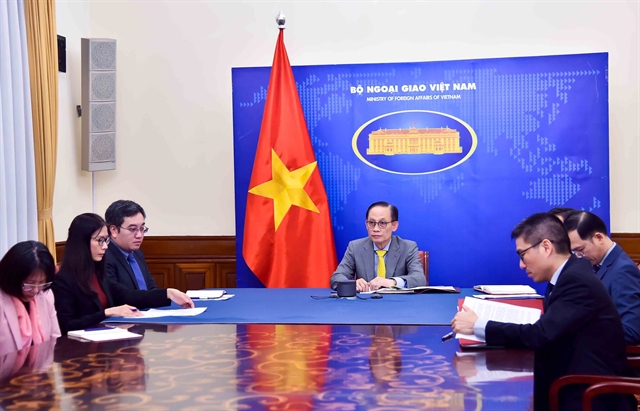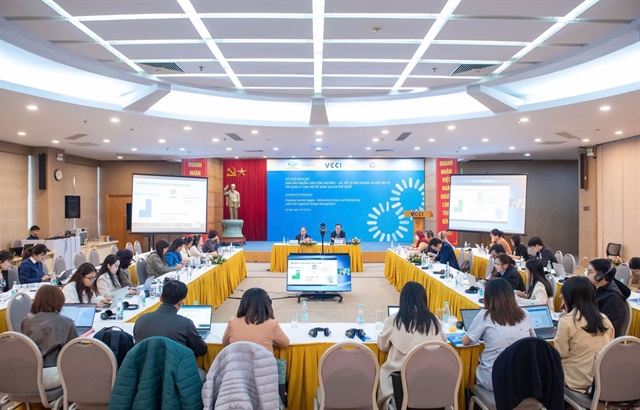 Society
Society
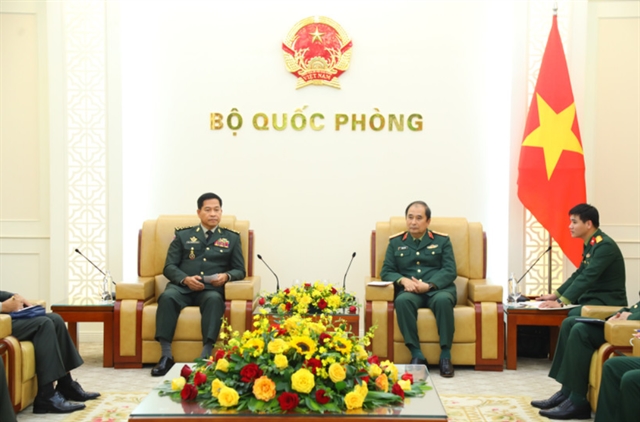
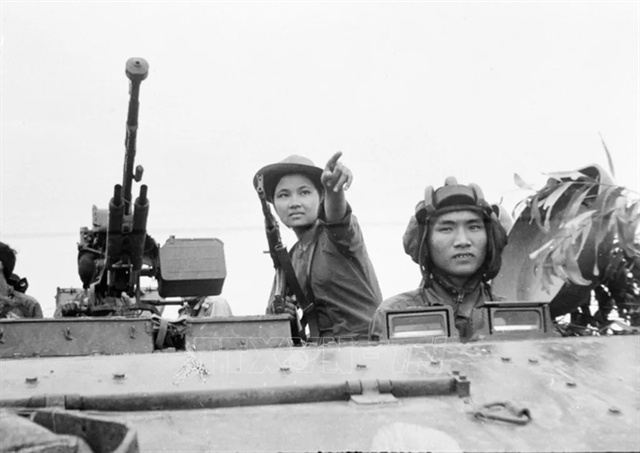 |
| A woman commando of the Sài Gòn Special Forces guides the Liberation Army into Tân Sơn Nhất Airport. – VNA/VNS File Photo |
Thu Hoài – Hứa Chung *
HCM CITY – More than half a century after the 1968 General Offensive and Uprising, the memories of fierce battles and life-threatening covert missions remain vivid for the former soldiers of the Sài Gòn Special Forces, who helped write a heroic chapter in the nation's efforts to reunify.
Secrecy was vital for the Sài Gòn Special Forces.
They used clever covers, posing as contractors or even mistresses, to avoid detection by the enemy and operate unnoticed.
Trần Văn Lai (alias Năm Lai)’s cover was that of an interior design contractor for the Independence Palace, while his wife Đặng Thị Tuyết Mai (also known as Đặng Thị Thiệp) posed as his “mistress” to carry out missions.
Their most remarkable contribution was the construction of secret bunkers that concealed more than two tonnes of weapons later used in the Tết Mậu Thân (1968) General Offensive and Uprising, including the attacks on the Independence Palace and key Sài Gòn government offices.
In 1965 Lai and his comrades were assigned to build weapon bunkers and transport arms into the city. To safeguard his cover, Thiệp agreed to be his “mistress” for many years. Then just 18 or 19 years old, she was taken around Sài Gòn by Lai to look for houses supposedly meant for his “mistress”, with the condition that they had to be small and tucked away in alleyways to avoid being suspected by his “wife”.
In reality, these houses were used to construct secret weapon bunkers in preparation for future attacks.
After buying the houses, the couple built bunkers and hid more than two tonnes of weapons in three adjacent homes on Nguyễn Đình Chiểu Street.
Even after they were married for many years, Thiệp kept up the “mistress” pretense, enduring misunderstanding and constant danger in enemy-held areas to protect her husband and comrades.
Since the 1960s the Sài Gòn – Gia Định Special Forces had been carrying out bold missions with support from specialist forgers. Lâm Quốc Dũng (alias Dũng Râu) was a key figure, producing fake IDs and permits for comrades operating inside the city.
Dũng recalls that during the 1968 General Offensive and Uprising, around 200 of the Sài Gòn Special Forces required fake IDs to pass enemy checkpoints.
He was tasked with forging them, and says the challenging part was perfecting the signature. He practised constantly, sometimes signing 10 sheets to get just one right, knowing that a suspicious signature could lead to the capture of his comrades.
"In every battle we fought, I played my part — that was both my reward and my greatest motivation to carry on, no matter the hardships or dangers," Dũng Râu says proudly.
 |
| The attack on the US embassy in Sài Gòn on the night of January 30, 1968, and in the early hours of January 31, shocked public opinion in the US and around the world. On February 1, 1968, the image of the embassy under attack appeared on the front page of The New York Times, stunning the American public. – VNA/VNS International file Photo |
Victory belief
The belief in final victory, expressed in late President Hồ Chí Minh’s 1968 Tết greeting of “Forward! Victory will surely be ours!” inspired the Sài Gòn Special Forces and fuelled their bravery during the Tết uprising.
One of their five strategic targets during the campaign was the Independence Palace.
Team 5 of F100 Unit (Sài Gòn – Gia Định Special Forces) led by Tô Hoài Thanh (alias Ba Thanh) was assigned to attack the compound.
Phan Văn Hôn (alias Bảy Hôn) recalls that, just before Tết, the 15 members of Team 5 were ordered to enter the city using various routes. By 4pm on the 29th day of the month before Tết, they gathered at the house of Năm Lai (Hero of the People's Armed Forces Trần Văn Lai) where there was a hidden bunker containing tonnes of weapons and ammunition.
For Vũ Minh Nghĩa (alias Chín Nghĩa), the only woman involved in the attack, the battle remains unforgettable.
Although the scale of the mission took them by surprise, all 15 members of Team 5 vowed to fight to the last bullet, even if it meant sacrificing their lives.
At around 2am on the second day of Tết the team launched the attack on the Independence Palace.
The lead truck quickly took out the guard post, allowing explosives to be placed at the gate of the palace. But the explosives failed to detonate and destroy the gate, and the team could not enter the palace. Five of the soldiers were killed while attempting to climb over the fence to enter the palace.
Under heavy fire and with the enemy amassing reinforcements, they were unable to enter the Independence Palace and fought from Nguyễn Du Street.
At the Nguyễn Du - Thủ Khoa Huân intersection, they held an unfinished five-story building, fighting off enemy attacks while awaiting reinforcements. The battle in which the 15 soldiers took on hundreds of enemies lasted two nights and one day.
Eight soldiers were killed, and the rest were injured and captured after fighting to the last bullet. Nghĩa’s commander also fell at the Independence Palace.
Nghĩa recalls her commander’s last words: "My injury is severe, and I cannot go with you. Hold the line and wait for reinforcements. Do not retreat. It is an order.
“He collapsed on my shoulder and passed away. We fought until the last bullet.”
Đào Thị Huyền Nga (alias Lê Hồng Quân), commander of the Lê Thị Riêng Female Special Forces Battalion, fought fiercely when faced with the enemy.
But as the situation became increasingly deadly, she ordered her unit to withdraw to protect the remaining troops.
When someone needed to stay behind and deliberately reveal their position to distract the enemy, two injured comrades volunteered to remain with her.
Despite being seriously wounded and hit by shrapnel, Nga made the brave decision to cut off her injured arm by herself and kept fighting until her last bullet.
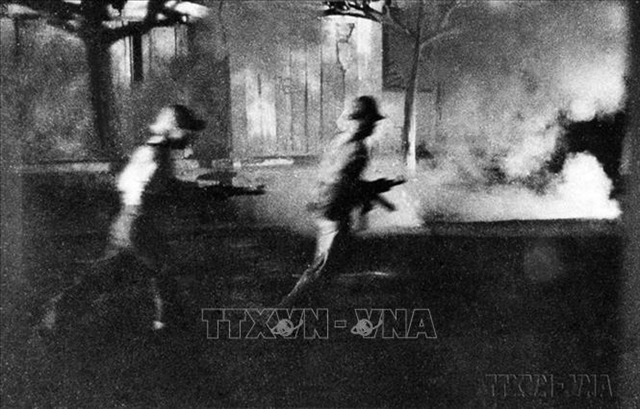 |
| Liberation forces attack and eliminate enemy troops in Sài Gòn on the night of January 30, 1968, when it was Tết, and in the early hours of January 31. – VNA/VNS File Photo |
Colonel Nguyễn Văn Tàu, (alias Tư Cang), Hero of the People’s Armed Forces and former head of the H.63 intelligence group, witnessed numerous battles by comrades from different units.
He clearly remembers the attack on the Independence Palace by Team 5 of F100 Unit.
At the time he was at the home of Tám Thảo, an H.63 intelligence agent, at 136B Gia Long Street (now Lý Tự Trọng Street, District 1), just 200m from the palace.
Watching from the window, he saw the team fighting bravely but weakening as they ran low on ammunition and strength. He thought to himself that something had to be done to help them hold out a bit longer.
Dusk was approaching and the fading light could be their chance to retreat, he realised.
The enemy’s command post was on a rooftop just 50m away. With two K-54 pistols, he opened the window slightly, aimed, and fired a few shots to help the team.
That evening the special forces team tried to withdraw by moving across nearby rooftops. But they were badly injured and too exhausted to move quickly or get far.
In the end they were all captured by the enemy.
Despite being tortured brutally and moved between various prisons, the special forces commandos never revealed any information about their organisation.
After the 1973 Paris Peace Agreement, many were released and later assigned to new roles in different units.
During the 1975 Hồ Chí Minh Campaign, some, including Vũ Minh Nghĩa, were ordered to take part in the attack on the Independence Palace.
However, while on their way they received the news that the revolution had already succeeded.
“At that moment everyone burst into joy,” Nghĩa recalls. – VNS
* This is part of a three-part series on Sài Gòn Special Forces by Vietnam News Agency reporters.


